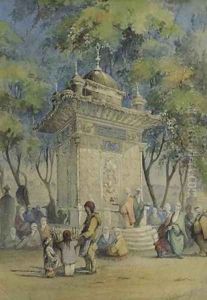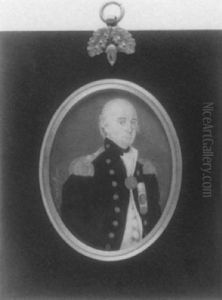Charles Frederick de Brocktorff Paintings
Charles Frederick de Brocktorff was a notable artist born in 1775, in Flensburg, Schleswig (then part of the Kingdom of Denmark, now in Germany), who made a significant impact on the art scene of Malta during the 19th century. His artistic journey began in his native country, but it was in Malta where he truly flourished and left an indelible mark. Brocktorff moved to the island in the early 1800s, embedding himself in the cultural milieu of his adopted home.
Trained in the Danish and German artistic traditions, Brocktorff’s work in Malta spanned a variety of genres, including landscape painting, portraiture, and military subjects, reflecting the island's strategic importance in the Mediterranean. His adeptness in capturing the subtleties of light and shadow, combined with a keen eye for detail, allowed him to produce works that were not only visually appealing but also rich in narrative. Among his contributions to the Maltese art scene were his detailed depictions of local landscapes and urban settings, which serve as valuable historical records of the era.
Brocktorff was also recognized for his contributions to lithography, a field in which he was a pioneer on the island. Through his work in this medium, he was able to reproduce his and others' artworks, thereby reaching a wider audience and contributing to the dissemination of visual culture in Malta. His studio became a center of artistic activity, attracting both local and international artists, and fostering a vibrant artistic community.
In addition to his artistic endeavors, Brocktorff played a role in the cultural life of Malta through his involvement in the establishment of the Malta Society of Arts, Manufactures, and Commerce. His efforts in this arena demonstrated his commitment not only to the arts but also to the advancement of Maltese society.
Charles Frederick de Brocktorff passed away in 1850 in Valletta, Malta. His legacy, however, continues to be celebrated, with his works held in high regard both in Malta and internationally. They are featured in various collections and exhibitions, serving as a testament to his skill and his profound impact on the artistic landscape of Malta in the 19th century.

